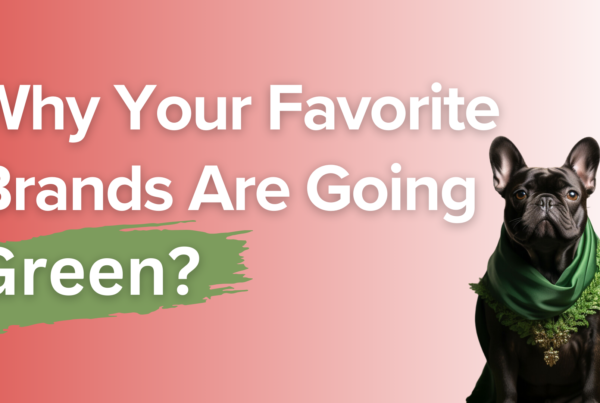8 Interesting Ways to Connect Your In-Store Experience With Your Digital Marketing Strategy
Setting the Stage
We are in the 21st century, an age where technology has become essential to our everyday lives.
The use of devices such as cell phones and tablets, or resources like wifi, Google Maps, and Netflix, have morphed into requirements for how we live in today’s times.
Even the methods by which we get our basic necessities like food, water, shelter, clothing, communicating with others, etc., have changed.

With that being said, how can traditional brick and mortar retailers keep up with the technological changes in the marketplace? One major shift traditional retailers have taken advantage of is digital marketing; using online methods such as email, social media, search engine marketing and more, to drive in-store traffic.
If utilized consistently and effectively, these digital marketing strategies can not only increase foot traffic to your store’s geographical location, but can also help traditional retailers keep up with the booming eCommerce market.
Here at Phu Concepts, Inc., we know that keeping up with the everyday housekeeping of a brick and mortar business, on top of fostering a consistent digital presence, can be overwhelming!
To avoid double-duty, we’ve put together the following tips on how to combine your separate brick and mortar and digital marketing strategies into one cohesive, well-oiled machine.
The 8 Ways that Phu Concepts recommends
1. Offer In-Store Promo Codes and Coupons Online
One direct approach to converting online browsers to in-store purchasers, is to offer a promotional code or coupon online that can only be redeemed in-store.
This is especially helpful if you’re a traditional brick and mortar retailer who also offers the same products for purchase online.
Enticing these customers to shop in-store increases the possibility of add-ons, up-sells, and an overall larger purchase.

One retailer who does really well at converting online shoppers is Dominos. Their online ordering process is pretty efficient; choose what you want, pay online, and have your food delivered to you in 30 minutes or less. So how does Dominos get customers to come into their physical locations? By offering carry-out only deals online.
Delivering these in-store only deals can be performed in a variety of ways, it really depends on where your audience is online. Use an automated email marketing tool like MailChimp or Hubspot to reach consumers in their inboxes.
In addition to this, you can also post coupon codes on social media channels like Facebook, Instagram, Pinterest, or Twitter to be seen on your consumers’ social timelines.
2. Encourage Customers to Leave Online Reviews and Respond Accordingly
Did you know that 74% of people use social media to guide their purchasing decisions? Actually, about 60% of new customers engage with a brand on social media first before making a purchase. That means your potential customers are checking in on platforms like Facebook, Instagram, and Twitter before ever stepping foot in your store.
That being the case, encouraging customers to leave reviews on your company’s website, social media accounts, and even Google, can only help increase the amount of new customers you receive.
However, receiving the review is only half the battle. The sad truth is, many businesses fail to respond accordingly to customer reviews. Doing this can negatively impact your company’s digital presence and, ultimately, how customers view your brand.
When customers leave an online review, they are taking valuable time to either endorse or condemn your product or service; it’s up to you to use and respond to this information effectively.
Learning about your customers’ experience with your business is the foundation to market research.
All reviews, whether positive or negative, can help you adapt your business model to fit the needs of your ideal customers.
Reviewing, reflecting, and responding to online reviews help you better understand exactly how your business practices affect your bottom line.
3. Post Online Reviews, Top Comments, or Social Media Likes on In-Store Items
This method allows you to take your online interaction to the next level. If you find that a certain product or service receives a lot of likes, reviews, or shares online, take some time to creatively display that in your store!
With 55% of shoppers using recommendations or comments on social media to research products before purchase, displaying these reviews in-store can only help increase conversion rates.
When customers can see an item is popular among their peers, their purchase has already been affirmed before they even make it!
Putting an effort into posting customer feedback in-store does more than speak to popularity and quality of the product.
Moreover, this act shows that your customer’s experience is just as, if not more, important than their money. Validating the significance of your customer’s opinions lets them know just how much it drives the success of your business.
4. Encourage Online Interaction In-Store
Encouraging online interaction with your customers while they shop is a great way to showcase the in-store experience you provide.
Try welcoming your customers with a Facebook check-in discount when they arrive, offer a coupon at check out if they ‘like’ your social media pages, or send an in-store promo code if they sign up for your email list.
Not only are these creative ways to build both your digital and in-store communities, but it also encourages immediate interaction on social media.

If you’re a retailer with products of visual appeal, like a clothing store for example, making it easy for customers to take pictures of or with your products is another great way to start an online conversation with your in-store shoppers.
Try setting up a photo booth near the dressing rooms. If your products can’t be tried on, make sure your location is ‘selfie ready’ by investing in quality lighting.
Use this content as a way to interact with your customers on a personal level. Post it to social media and tag them to acknowledge their purchase. This will create brand loyalty and spark conversation about your business online, especially if they have a large social following. After all, a picture is worth a thousand words, right?
5. Encourage Online Interaction Out-of-Store

This method is similar to #4 in that it encourages customers to create online content based on your business’ product offerings.
In this case, we’re encouraging customers to creatively showcase how they utilize your products to their audience. Being that about 49% of the world’s population actively uses it, social media is a great tool for this method. Not to mention, 49% of the world’s population is more than 3 billion new potential customers for your business!
We recommend you create a trending hashtag for customers to use when posting about your products or services.
Whether it be a Google review, a picture, or even a video featuring your products, the end goal is to start a conversation with your customers and create a community around your brand.
Furthermore, encouraging current customers to utilize a hashtag that you create in their online content makes it that much easier for new customers to find you.
6. Host Events to Connect In-Store and Online Customers
When you begin to bridge your brick and mortar and digital strategies, it helps to also connect your in-store and online communities as well.
Hosting an event at your location is a great way to bring these customers face to face with you, your staff, and each other.
Things like book signings, cooking classes, guest speakers, or even hiring a social media influencer to visit your location are all great ways to cater to your existing customers and attract new ones.
Take it a step further and add some exclusivity to your events by only inviting select loyal customers.
Sending personalized invites to your frequent in-store shoppers and your most active online shoppers lets them know that there is value in brand loyalty.
Showing your customers that their business is appreciated only encourages them to continue shopping with you, and the added value will help set you apart from competitors.
7. Use Proximity Targeting to Promote In-Store Discounts
Proximity targeting allows you to advertise to customers who are in a virtual radius surrounding a particular location. This is made possible through geofencing advertising, a way to market to potential customers in a defined area and influence them to patronize your business.
When your ideal customer enters your defined geofence, the geofencing software can be used to promote any new products or any in store deals you don’t want them to miss.
8. Use Proximity Targeting to Attract Customers At Competitor’s Locations
This method takes proximity targeting to the next level by converting customers at competitor’s locations.
Whether they make it to your physical location or they purchase something online, the goal is to get potential customers to shop with you and not your competitors.

Burger King did exactly this with their recent Whopper for a penny promotion. In order to convert customers at McDonald’s locations, Burger King offered Whoppers for a penny.
However, to get the penny Whopper, customers had to order through the Burger King app and pick it up at a participating Burger King location.
Do you know how easy it is to find a penny somewhere? Genius!
Conclusions
Although digital marketing has become the new norm for many businesses, this doesn’t spell out the death of brick and mortar.
Bridging your online and brick and mortar strategies is a great way to interact with your customers and form a community around your brand.
Ultimately, this value you create will lead to increased brand loyalty and, whether online or not, an overall increase in your bottom line.
Our hope for the brick and mortar retailers out there is that you have been able to adapt your business model in order to remain afloat during this uncertain time of quarantine and panic.
If you happen to be struggling with this or, on the flip side, you’re going to need help with your transition strategy for when outside opens up again, shoot us an email! Either way, we’re here to help you strategize and put your plans into action.
References:
https://wearesocial.com/blog/2020/01/digital-2020-3-8-billion-people-use-social-media
https://www.howtogeek.com/221077/htg-explains-what-geofencing-is-and-why-you-should-be-using-it/





